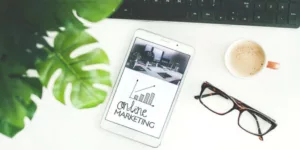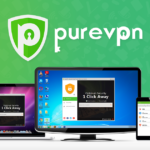Whenever there has been a new invention or a groundbreaking design, people have come to know of them through some form of advertising. Whether it was in print, the radio, broadcast on TV, printed leaflets or through word of mouth, the buyer has always come to know of the product through some form of marketing. You could say that it has been around since the dawn of civilization. However, it was never as sophisticated and targeted as it is now. With the advancement of technology, people began to filter the information coming to them. As a result, they started muting advertisements on the television, skipping ads on YouTube, and using ad blockers for almost all online ads.
Today, we stand at the beginning of an era, during which people have little patience for fluff. Thousands of brands and millions of products are trying to reach them 24/7. It is difficult for the brands to make their mark as it is difficult for the consumer to screen the value-adding information out from the fluff. It has called for something more than traditional marketing and advertisements. Experiential marketing takes the finest qualities of conventional advertising, social media marketing, digital ads and puts them together in a giant melting pot. The result is almost always first-hand customer interactions that open the path for real-time data collection.
Experiential marketing can have several components including live events, pop-ups stores, pop-up events, and mobile tours. It is different from the tried and tested methods most brands use to reach their audience. It often results in an exceptional reach of brand awareness. Reaching out to a potential customer in a unique way can cement a leading spot for your brand and your products in his or her mind. It is a brilliant way to remain visible, relevant and accessible in the market.
What are the different ways of increasing the impact of your experiential marketing campaign?
Planning an experiential marketing campaign need not be daunting and complicated. It does not have to be exuberantly costly either. You merely need to have the right talent, the time to plan and the information. Here are the five ways to maximize the impact of your upcoming event –
What are your objectives?
Every event requires a purpose. Defining a budget for an event becomes moot if it does not have a clear objective. What is yours? Is it to drive awareness among new customers? Is it to collect information from the participants? Is it to test the market for a new product? Unless you manage to define a goal, you will not be able to identify the set of metrics that will denote the returns. Without a specified purpose, it is difficult to justify the expenses and track the returns.
Who is your audience?
The earlier you ask this question to yourself, the better it is for your brand. Without a detailed knowledge of your market, you will have a tough time convincing the customers to try your new products. The information on your customers is the foundation of your experiential program. Consult your customer service agents, client account execs and the sales staff to get some first-hand information on your customers. Building a buyer persona should help you target your event effectively.
Are you getting help?
Experiential marketing might seem like just another outdoor event to you, but it is a sophisticated marketing instrument that establishes the communication channel between you and your customer. You have to do everything you can to make it right. For any first-timer, planning and executing an experiential event is going to be close to impossible. It is a multi-faceted method that requires several levels of management. Without the help of trained experts, who have experience in this field, you might find experiential marketing unnecessarily costly, labor-intensive, and untargeted. Visit New York experiential agency Roots3 Productions to learn more.
Do you have tools in place to measure returns?
What happens after the event is over and after the audience leaves? Do you pack up, go home and go back to your regular lives? What impact does the experiential marketing event have on your lives? You need to establish a set of metrics that can define the success, failure, and returns. You might want to look out for –
- The mentions of your products and brand on social media channels
- The strength of the crowd
- The number of registrations and the number of new names
- Existing customers in the list
- Any survey results following the event
Are you taking a multi-prong approach?
You need to keep an open mind while embracing these non-traditional marketing methods. You might want to offer your audience a complete sensory experience that demands the portmanteau of several events, products, and services. Focusing on your target audience will give you ideas that will bring high returns. Organizing a campaign with several events parts of it creates a foolproof way to gather customer information. It might be redundant, to begin with, but it helps to emphasize various elements of a campaign. While designing the drive and the events, you must remember that the events should propagate the brand awareness as far and wide as possible through the available channels.
All the while, you should not neglect the power of social media. Brands are experiencing marketing dead ends on multiple social media platforms due to overloading and saturation. However, you should always intimate your existing customers and the rest of the world about your upcoming event plans, tour routes, and pop-up shop locations through your official brand page.
Till date, the top groundbreaking campaigns across the world have paved the way for communication between the consumer and the brand. Communication enhances customer experience and cements the customer loyalty. Experiential marketing has the potential to do that for your brand, along with opening new markets for your new products. So, keep your eyes on that consumer database and start thinking of innovative ways to take their breath away.








